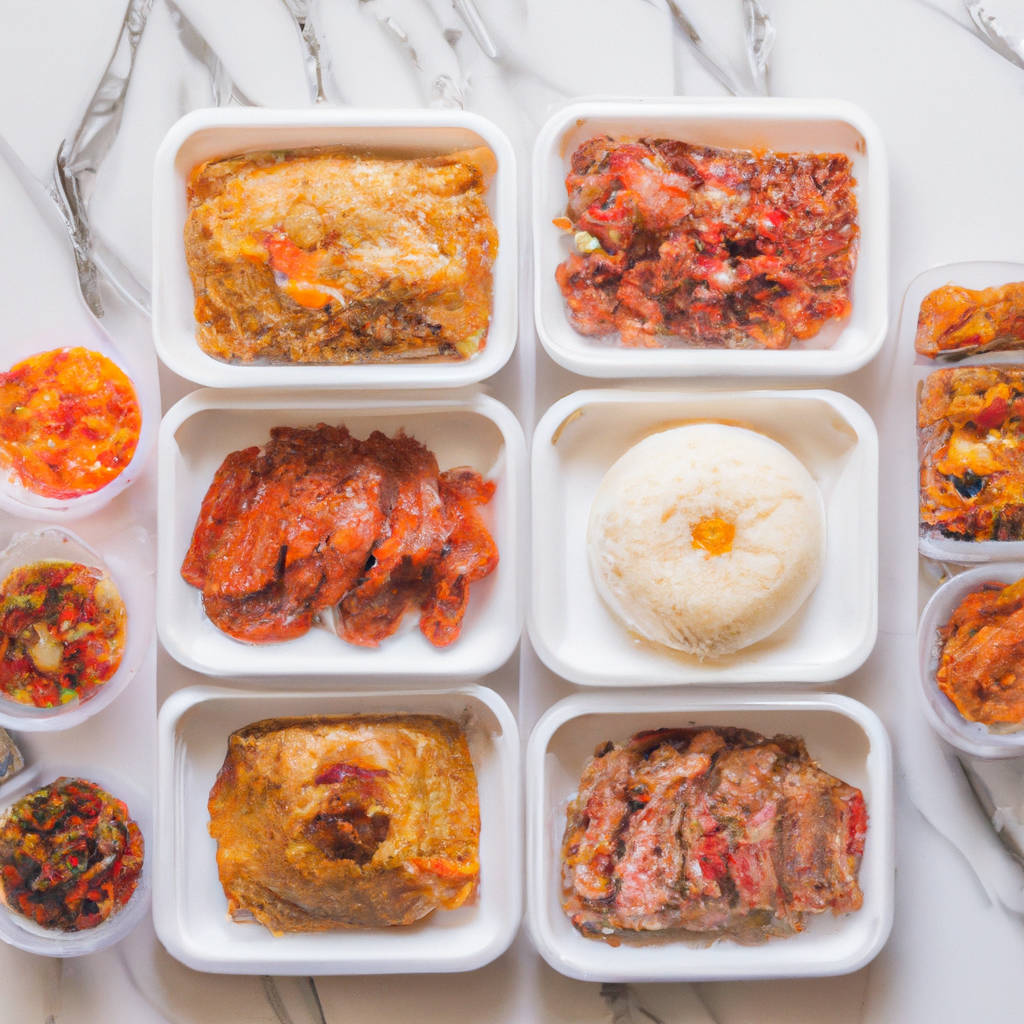In the realm of food delivery services, a multitude of platforms have emerged to compete with Uber Eats, each providing their unique touch to the process. One of the top contenders is DoorDash, which operates in many cities across the U.S and Canada, offering a wide variety of restaurants to choose from. It has a user-friendly interface and often provides special deals and discounts. Another significant player in the market is Grubhub, which boasts an impressive roster of partner restaurants and often provides faster delivery times.
Postmates, another popular alternative, stands out for the diversity of its offerings. Not limited to food, you can use Postmates for delivery of groceries, drinks, and more. Instacart, while primarily a grocery delivery service, has recently expanded to include some restaurant offerings as well, making it a viable alternative. Finally, there’s Seamless, a subsidiary of Grubhub, which is popular in many urban areas for its variety and reliability. Each of these platforms offers a different set of benefits and caters to different customer needs, providing a competitive marketplace for food delivery.

Other Options Similar to Uber Eats
There are numerous alternatives to Uber Eats that offer food delivery services, each with their own unique features and benefits. For instance, DoorDash is a popular choice that boasts a wide range of restaurant options and often provides promotional deals to its customers. GrubHub, on the other hand, is renowned for its seamless user interface and extensive reach, servicing over 4,000 U.S cities. Postmates is another viable option, offering not just food delivery but also a courier service for goods and groceries, making it an incredibly versatile platform.
Instacart focuses primarily on grocery delivery, enabling users to shop from their favorite supermarkets online and have the items delivered straight to their doorstep. Deliveroo is a highly recognized service in Europe, known for its swift delivery times. Another contender is Just Eat, which operates in the UK and has a significant presence in the global market. Furthermore, there are region-specific services like Swiggy and Zomato in India, which have gained immense popularity due to their localized approach and extensive restaurant partnerships.
Amazon Fresh, while primarily a grocery delivery service, has also been expanding its ready-made meal delivery options. Lastly, there’s Caviar, a service that focuses on premium restaurants which might not be available on other platforms. Each of these platforms has its own strengths and caters to different customer preferences, making them effective alternatives to Uber Eats. Therefore, depending on your specific needs and location, these other options offer a wealth of choices for food and grocery delivery.
Popular Services Competing with Uber Eats
Uber Eats is a prominent player in the food delivery market, but it is not without competition. Some popular services rivaling Uber Eats include DoorDash, GrubHub, Postmates, and Instacart. These platforms offer similar convenience and variety, making the food delivery landscape a competitive one.
DoorDash, for instance, has a vast network of restaurant partnerships, enabling it to provide a wider range of food options to its customers. The platform also offers a subscription model, DashPass, which gives subscribers free delivery and lower service fees, thus attracting a loyal customer base.
GrubHub, on the other hand, is known for its exclusive deals with certain restaurants, which gives it an edge over competitors. It also offers a loyalty program that allows customers to earn points with every order, which can be redeemed later for free meals.
Postmates differs by not limiting its services to food delivery. Customers can use Postmates to have virtually any item delivered to their doorstep, from groceries to office supplies. This versatility gives Postmates a unique position in the market.
Instacart focuses mainly on grocery delivery, a niche that has seen significant growth, especially during the COVID-19 pandemic when many people preferred to avoid crowded supermarkets. By partnering with a multitude of grocery stores, Instacart provides customers with a wide variety of products to choose from, conveniently delivered to their homes.
Despite Uber Eats’ popularity, these competitors continue to challenge its market dominance through their unique offerings and customer-focused services. The competition among these platforms drives innovation and improvements in service, benefiting customers by providing them with more choices and better overall experiences. The food delivery market is a dynamic one, and it will be interesting to see how it evolves in the coming years.

Best Alternatives for Food Delivery Besides Uber Eats
There are several excellent alternatives to Uber Eats for those seeking a diverse range of food delivery options. First on the list is DoorDash, which is well-known for its extensive restaurant partnerships and quick delivery times. DoorDash offers a subscription service, DashPass, which provides free deliveries and reduced service fees for a monthly charge. GrubHub is another popular choice, offering a comprehensive range of local and chain restaurants. Through its subscription service, GrubHub+ members receive unlimited free delivery and exclusive perks.
Postmates is another competitor in the food delivery market, offering not only restaurant food but also groceries and alcohol in certain areas. This expansive selection makes Postmates an appealing choice for those seeking more than just meal delivery. Similarly, Instacart, while primarily known for grocery delivery, has started partnering with restaurants to expand its services.
Caviar, another alternative, is recognized for its partnerships with high-quality, gourmet restaurants. This platform is perfect for those seeking a more upscale dining experience at home. Meanwhile, Just Eat Takeaway, a European-based company, has seen significant growth in recent years and presents another option for food delivery.
Lastly, for those who prefer to support local businesses, many restaurants have started offering their delivery services, bypassing third-party apps. This direct approach often means more money goes to the restaurant itself, supporting local economies.
In conclusion, while Uber Eats remains a popular choice for many, it’s far from the only option. DoorDash, GrubHub, Postmates, Instacart, Caviar, Just Eat Takeaway, and direct restaurant delivery all present compelling alternatives for those seeking variety, convenience, and a way to support their favorite local eateries.
Local Favorites in Food Delivery
Local Favorites in Food Delivery is a topic that revolves around the popular and most sought-after food items that are commonly delivered in a specific locale. This is a subject that captures the culinary preferences of a specific region or community, reflecting the tastes and preferences of its residents. In every city, there are certain dishes that are incredibly popular and frequently requested for delivery. These local favorites can range from a specific restaurant’s specialty dish to a traditional meal that’s deeply ingrained in the region’s culture.
Food delivery services have made it easier for people to enjoy these local favorites in the comfort of their homes. They have turned into an integral part of our daily life, particularly in urban areas, providing convenient access to a wide array of food choices, including these regional specialties. For instance, in New York City, bagels and pizzas are often top of the list, while in Philadelphia, the Philly cheesesteak reigns supreme. Similarly, in coastal areas, seafood dishes like clam chowder or shrimp and grits could be the local favorites.
The popularity of these local favorites in food delivery is often driven by the unique flavors and authenticity that they offer. These dishes usually have a rich history and tradition behind them, making them more than just food, but also an experience of the local culture. Moreover, many of these local favorites are often made with locally sourced ingredients, ensuring freshness and quality that’s hard to replicate elsewhere. In addition, the convenience of having these sumptuous meals delivered right at your doorstep further enhances their appeal.
Understanding local favorites in food delivery also provides valuable insights for restaurants and food delivery services. They can tailor their menus and offerings according to these preferences, ensuring customer satisfaction and repeat orders. Hence, the topic of local favorites in food delivery is not only about culinary preferences but also about how these preferences shape and influence the food industry.

Specialized Platforms for Unique Cuisines
Specialized platforms for unique cuisines have emerged as a significant trend in the culinary world, providing a more personalized and immersive dining experience for food enthusiasts. These platforms cater to a niche audience with refined palates, who are on a continuous quest to explore diverse culinary landscapes. Restaurants and online food delivery services are focusing on offering a diverse array of unique cuisines, such as Ethiopian, Peruvian, Moroccan, and so on. This shift in focus allows them to stand out in a saturated market and pique the interest of food explorers looking to experience new flavors.
Moreover, these specialized platforms often extend beyond just serving rare and exotic dishes. They also provide informative content about the origin, culture, and traditional cooking methods of these unique cuisines. This holistic approach not only enriches the culinary journey of the patrons but also instills a deep appreciation for the intricate art of cooking. It’s not unusual to find cooking classes, workshops, and even travel suggestions on these platforms, adding an extra layer of engagement for the users.
In the digital age, these specialized platforms come in different forms and channels, ranging from mobile apps, websites, and social media pages to dedicated YouTube channels. Each platform uses a unique approach to present these cuisines, making the experience more interactive and enjoyable. Some platforms focus on recipes and cooking techniques, while others highlight restaurant reviews and food travel stories.
These platforms have also created a global platform for chefs specializing in unique cuisines, providing them with a chance to showcase their skills to a wider audience. Similarly, independent food producers and suppliers can connect directly with consumers, contributing to a more sustainable and fair food ecosystem. The emergence and popularity of these specialized platforms for unique cuisines signify a broader trend towards personalization and experience-driven dining in the food industry.
Emerging Apps Transforming Food Delivery
The digital revolution continues to reshape numerous sectors, and the food industry is not exempt from this transformation. Specifically, the emergence of innovative food delivery apps has drastically transformed the way we order, pay for, and receive meals. Companies like GrubHub, DoorDash and Uber Eats have mastered the art of capitalizing on the convenience of technology to bring food from restaurants to the doorstep of customers. These apps have incorporated advanced features such as real-time tracking, a plethora of payment options, and customized recommendations, enhancing the user experience and making food delivery more efficient and user-friendly.
Moreover, these apps are also pushing the boundaries by exploring new trends like ghost kitchens, where restaurants solely dedicated to online delivery operate. This not only expands restaurant offerings but also reduces operating costs. Furthermore, as sustainability becomes a significant concern, many of these apps are considering eco-friendly practices, such as using biodegradable packaging.
On the economic front, these apps have generated a new employment sector for delivery personnel. Offering flexible working hours, these platforms have become a popular option for those seeking part-time or gig-based work. Additionally, these apps are also proving beneficial for restaurants, particularly during the pandemic, where online ordering became a lifeline for many establishments.
However, despite the numerous benefits, these platforms have had their share of challenges. Issues such as data privacy, fair pay for delivery personnel, and ensuring food safety are ongoing concerns that need to be addressed.
In conclusion, the emergence of food delivery apps has significantly transformed the food industry. As these platforms continue to innovate and evolve, they hold the potential to revolutionize not only how we consume food but also how the entire food industry operates. While challenges persist, the benefits and convenience these apps bring to both consumers and restaurants are undeniable. Hence, it is safe to say that these emerging apps will continue to play a vital role in shaping the future of food delivery.
